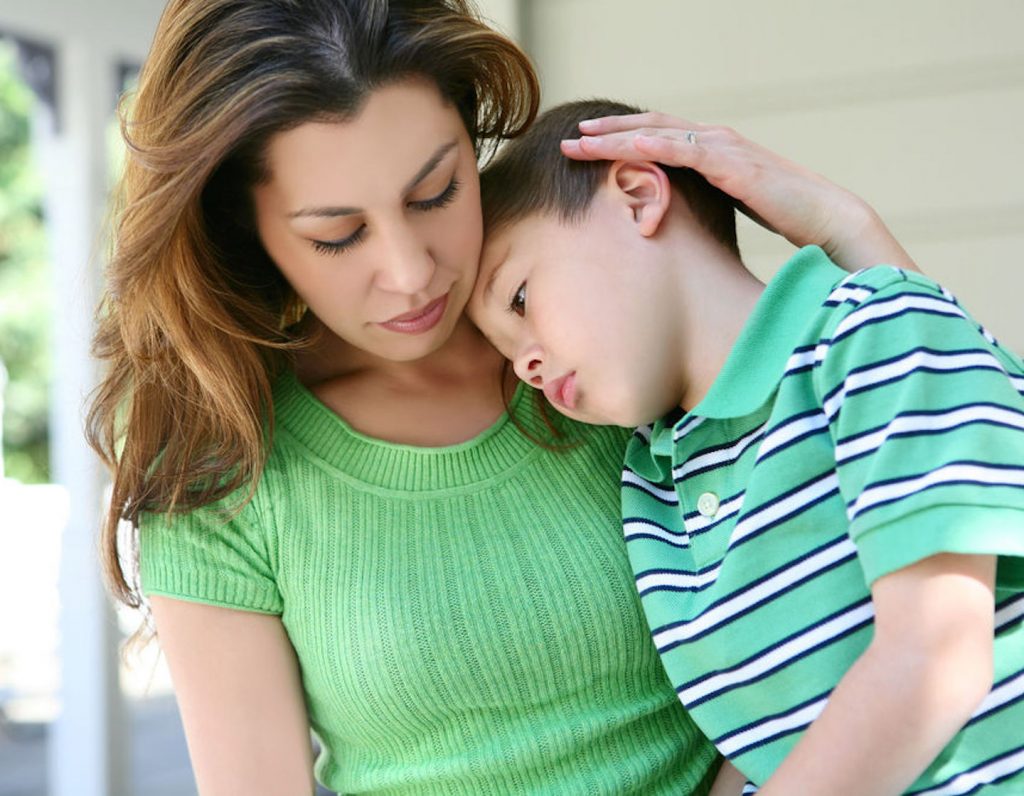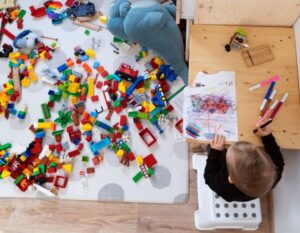
 Post Category - ParentingParenting - Post Category - Toddler & PreschoolerToddler & Preschooler - Post Category - Older KidsOlder Kids
Post Category - ParentingParenting - Post Category - Toddler & PreschoolerToddler & Preschooler - Post Category - Older KidsOlder KidsChild psychologist Anoushka Beh explains how parents can support their children and effectively deal with bullying.
In my last article on bullying, I explored how empathy relates to bullying, which has unfortunately become widespread among children today. In this article, we’ll be looking at how you, as a parent, can respond effectively if your child is involved in a bullying incident.
It’s never easy discovering this – whether your child was on the receiving end or the instigating side – and it can leave parents feeling anxious, powerless and ultimately with more questions than answers. How are you supposed to respond to your child, and engage with teachers and even the other parents of the child/children that were also involved? As a parent myself and psychologist who’s brushed up against this issue many times, I’ve put together a concise guide highlighting some key suggestions on how I believe you can help yourself and your child if they’ve been involved in bullying at school.
Manage your own emotions first
When our children are hurt or have been threatened in some way it’s almost reflexive for our anxiety levels to shoot through the roof. Feeling guilty that we couldn’t protect our child better, or ashamed that we have unwittingly raised a child who is now bullying others, are common emotions. First and foremost, know that these are absolutely normal responses. What is also true, though, is that most parents will want to ensure that this incident is not repeated and that the damage limited to this one experience.
If you are in a place where emotions are high however, particularly if you are feeling anxious or fearful, this will significantly hamper your abilities to respond clearly and engage effectively with your child to help them navigate through this complex situation. Calm your mind and emotions as much as possible. Breathing techniques, exercise, speaking with a friend, or just going for a long walk are all examples of how you can shift your brain from an emotional space into one that is more conducive for objective problem-solving.
Don’t play the blame game
Something else that’s really easy to do in response to bullying is to quickly decide who’s to blame — or who should get labelled as the ‘bully”, “perpetrator” or “villain” in this saga. When we do this, we get drawn into the drama and lose sight of the whys and hows of the situation along with our own compassion. We also role model black-or-white thinking for our own children, encouraging an “Us Vs. Them” mentality and ultimately fuelling emotions rather than soothing them.
Taking a more mindful and objective stance is a much more powerful and useful position. It will free you and your child to focus on understanding what happened and come up with a plan to support them moving forward – which really is at the heart of responding effectively to the matter.
Help your child make sense of what happened
This is key and the best thing you can do to ensure your child moves on from this experience relatively unscathed, wiser and more emotionally resilient. Bullying incidents usually involve threatening exchanges and heightened emotions that throw most kids (regardless of who started the exchange) into a state of fight-or-flight. In this state, the brain is unable to process what’s happening fully as it is in survival mode and really just about reacting as quickly as possible.
Often the details of the event get lost or become blurred, and it’s only afterwards, when kids sit down with a skilled adult who can guide them through re-constructing their experience, that they can then map out a clearer storyline of what happened and also the connection between the events and the emotions they experienced as a result.
Kids who don’t do this may have small ‘gaps’ in their memory around the incident/s and this can create a lot of confusion/disorientation for them on top of the emotional and physical damage they may have suffered as a result of the bullying. Kids who are guided through the process of making sense of what happened, however, come out more emotionally aware and are also less likely to perpetuate the cycle of bullying in future.
Questions that can help your child to reflect and understand their experience include (these can be phrased in age-specific language that your child will be most responsive to):
Can you remember what you were doing/thinking just before you pushed James?
What was the first thing that happened and how did you respond?
What thoughts or feelings do you remember having at the time?
Why do you think Sarah laughed at you in class and called you those names?

Teach them core skills
Again, because the nature of bullying itself often throws children into a high-reactivity state, they need alternative strategies to help prevent and/or manage this should a similar situation arise in future.
If your child is or has been more inclined to initiate the bullying in the past:
- Take this seriously and set clear boundaries around what behaviours are simply not acceptable in future.
- Try and get to the heart of what emotions (e.g. frustration/low self-esteem) may be motivating the bullying.
- Be a good role model for managing conflict and walk them through appropriate strategies they can use.
- Encourage and reward constructive behaviour and conflict management.
If your child was on the receiving end of the bullying:
- Tell them to walk away, stay close to friends, or use humour as a response if a similar scenario arises in the future. Let them know that it’s likely the bully will stop if they don’t get a response.
- Help them focus on their own strengths and develop more self-confidence, as this is a good way to bully-proof them for future attacks.
- Let them know their feelings matter, and encourage them to seek help if it happens again. Make sure they know they can always feel safe to discuss things with you openly.
For more information on bully-proofing skills you can teach your kids, these websites may be useful:
www.kidshealth.org/parent/emotions/feelings/bully-proof.html
www.antibullyingalliance.org.uk/how-to-help-your-child-if-being-bullied-advice-for-parents.html
Engage the help of teachers, other parents and professionals if necessary
Shelve any apprehension and/or discomfort that you may have around engaging the help of others for support to work through this issue. These incidents are not occurring on your home turf, as it were, so you will need more eyes and the support of the system moving forward. Teachers should be informed of the incident if they’re unaware and asked to monitor things in future. Be sure to avoid stigmatising or implying they’re irresponsible, as this can escalate the situation.
It can also be helpful to have a conversation with the parents of the other child/children who were involved in the bullying and, if necessary, have a sit down with all the kids to discuss what happened to prevent it from happening in future. Fostering a sense of openness and a willingness to collaborate with the other side on this matter can be empowering and much more effective, again, than the “Us vs. Them” approach which is isolating and often destructive.
As a further measure, if after a period of time you feel your child has not been able to move past the incident and is continuing to be bullied/bully at school, it may be worthwhile to seek professional help. Signs to watch for here include issues with appetite and sleeping, refusing to go to school and/or significant changes in mood — especially if these changes involve the child no longer enjoying doing things they once loved. Knowing that bullying can have emotional consequences that last well into adult life if not effectively managed, if you feel that your child has been emotionally impacted by the event/s and could use the help of a guidance counsellor or therapist, you should always feel comfortable to reach for this additional support.
—
This brief two-part guide was designed to deliver key strategies that are easy to apply and central to effective bullying management, but it’s important to note that there are lots of other tools and resources out there to add to your bully-proofing kit that work for your child. I advocate taking a proactive and open approach if you feel your child has experienced bullying — talking to other parents, sharing personal experiences, and discussing what’s worked for others in the past.
As you work to transcend the difficult emotions and thoughts that may have prevented an optimal response in the past, and connect with others in the community around their experiences, you will also be role-modelling empathy, vulnerability and the courage to express things even when they’re not the most comfortable. For your child, this in its own right will give them the assurance that they can do the same and face their own struggles in the schoolyard.






 View All
View All





 View All
View All









 View All
View All





![[𝗦𝗔𝗩𝗘 𝗧𝗛𝗜𝗦] 𝗞𝗶𝗱-𝗔𝗽𝗽𝗿𝗼𝘃𝗲𝗱 𝗗𝗲𝘀𝘀𝗲𝗿𝘁 𝗦𝗽𝗼𝘁𝘀 𝗬𝗼𝘂 𝗖𝗮𝗻 ‘𝗘𝗮𝘁 𝗳𝗼𝗿 𝗙𝗿𝗲𝗲’ 𝗪𝗶𝘁𝗵 𝗖𝗗𝗖 𝗩𝗼𝘂𝗰𝗵𝗲𝗿𝘀! 🍦🍩🧁😉
Before you ask “Can use CDC voucher?” Yes, you definitely can! These spots are perfect for an after-school treat, weekend fun, or just saying “yes” to dessert without saying goodbye to your wallet.
Comment “Sweet” or tap the link in bio for more foodie recommendations!
Got a fave kid-friendly spot that accepts CDC vouchers? Let us know in the comments too!
.
.
.
.
.
.
.
#CDCVouchersSG #SGMumLife #KidFriendlySG #FreeDessert #HeartlandEats #SweetTreatsSG #SGParents #FamilyFunSG #WafflesAndIceCream #BudgetParenting #ThingsToDoWithKidsSG #SGCafes #SupportLocalSG #KidsEatHappy #CDCAdventures](https://www.sassymamasg.com/wp-content/plugins/instagram-feed/img/placeholder.png)
